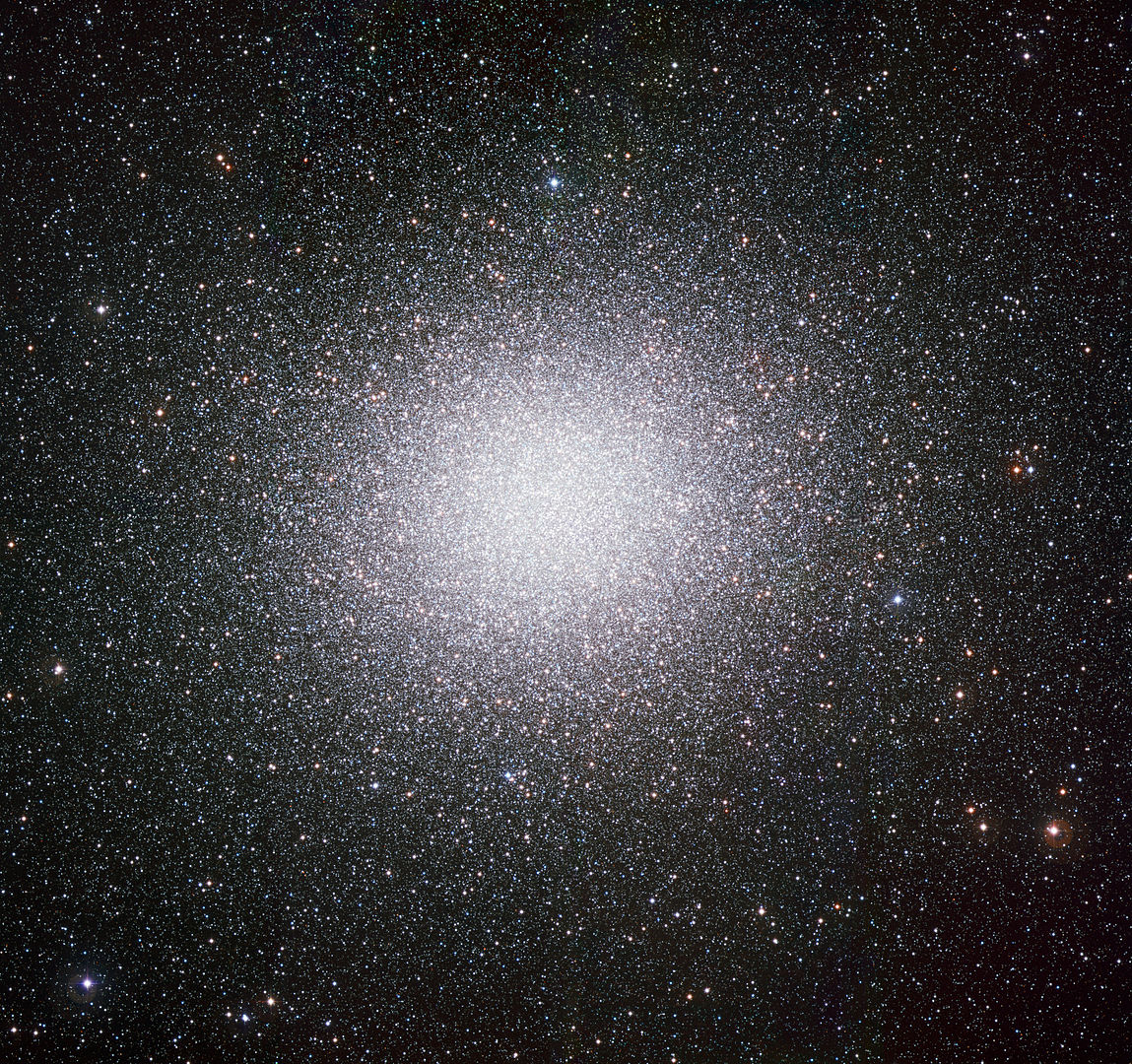Pulsars are extreme objects. They’re what’s left over when a massive star collapses on itself and explodes as a supernova. This creates a neutron star. Neutron stars spin, and some of them emit radiation. When they emit radiation from their poles that we can see, we call them pulsars.
In the last decade or so, astrophysicists have discovered many more millisecond pulsars, ones that rotate very rapidly. Not only is the number of known pulsars increasing, but researchers have also identified pulsar sub-types that have companions. These are called spider pulsars, and their companions face great peril. New research sheds light on how spider pulsars in Omega Centauri are tearing their companions to pieces with their powerful outflows.
The first spider pulsar ever discovered is PSR B1957+20, more widely known as the Black Widow Pulsar. It has a companion that’s either a brown dwarf or a super Jupiter. High-energy outflows from the Black Widow are destroying its companion. All pulsars that destroy their companions are known as spider pulsars, but there are two further sub-types of spider pulsars: redback pulsars and black widow pulsars.

Researchers working with the Chandra Space Telescope have examined Omega Centauri to learn more about how spider pulsars destroy their binary companions. Their work will be published in the Monthly Notices of the Royal Astronomical Society. The title is “A Chandra X-ray study of millisecond pulsars in the globular cluster Omega Centauri: a correlation between spider pulsar companion mass and X-ray luminosity.” The authors are Jiaqi Zhao and Craig O. Heinke, both from the Physics Department at the University of Alberta, Edmonton, Canada.
Omega Centauri is the largest globular cluster (GC) that we know of in the Milky Way. It’s almost 16,000 light-years away and contains about 10 million stars. Some of those stars are spider pulsars, a class of millisecond pulsars with companions.

Spider pulsars are terribly destructive neighbours. Their energetic winds methodically strip away their companions’ outer layers. To understand more about this phenomenon, the pair of researchers examined Chandra data from Omega Centauri, home to 18 recently discovered spider pulsars.
“Millisecond pulsars (MSPs) are faint X-ray sources commonly observed in Galactic globular clusters (GCs),” the researchers write. “In this work, we investigate 18 MSPs newly found in the GC Omega Centauri and search for their X-ray counterparts using Chandra observations.”
Out of the 18 millisecond pulsars, 11 of them emit x-rays that Chandra can see. Five of them are spider pulsars near Omega Centauri’s center. They combined these with Chandra’s observations of 26 spider pulsars in 12 other globular clusters. Using this data, the pair of researchers examined empirical correlations between X-ray luminosities and the minimum masses of their companions.

There are two classes of spider pulsars, and they’re based on their companions’ masses. Redback spider pulsars have companions between one-tenth and one-half of a solar mass, while black widow class pulsars have companions with less than 5% of the Sun’s mass.
The researchers found that redback spider pulsars are brighter in X-rays than black widow pulsars. This is in line with previous research.
But this is the first time that research has shown a correlation between X-ray luminosity and companion mass. We can see in the data how redback spiders with more luminous X-rays have more massive companions. That might seem counter-intuitive on the surface. What’s behind it?

Spider pulsars create X-rays when particles in their stellar winds strike the winds coming from their companions and produce shock waves. The more massive its companion is, the stronger the companion’s winds. That means the colliding winds produce more luminous X-rays.
“Therefore, our findings indicate that as the companion mass increases, the X-ray luminosity of the
spider pulsar tends to increase as well,” the authors write in their paper. “It likely suggests that a more
massive companion can produce stronger winds and thus generate stronger intra-binary shocks with relativistic pulsar winds, leading to higher X-ray luminosities as observed.”
These findings agree with theories of how spider pulsars work. Since spiders and their companions are never very far apart—between one and 14 times the distance between the Earth and the Moon— energetic particles from the pulsar are very destructive to their companions. This creates stronger shocks that produce brighter X-rays.
“It is clear that there is a correlation between X-ray luminosities and companion masses of spider pulsars,” the authors write. “This is consistent with the evidence that RBs generally produce more energetic shocks than BWs, and RBs are commonly an order of magnitude brighter than BWs.”
Spider pulsars follow a narrative trajectory worthy of Shakespeare. They live their lives of fusion as main sequence stars before exploding as supernovae, extremely energetic explosions that light up the sky for months with light equal to trillions of Suns. Then they exist as a kind of stellar zombie, an extraordinarily dense neutron star.
They spin rapidly while emitting powerful outflows of energetic particles. If they’re fortunate enough to have a companion, then their final act is to destroy that companion like the spider pulsars in this research.
Over time, pulsars cool down, and their rotation slows. After a few tens of millions of years, they cross what’s called the “Death Line” and stop pulsing. Then they’re just regular neutron stars, aging forever.

